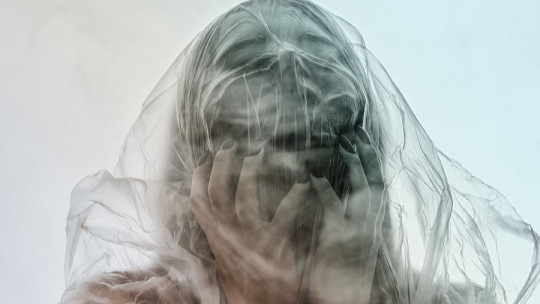There is quite a consensus within the field of psychology to say that human beings have a series of basic emotions, considered universal, as they are shared by people from all types of cultures and countries, although these emotions are experienced with different nuances, among others. those where disgust is found.
A group of researchers from the “London School of Hygiene & Tropical Medicine” have carried out research on disgust, in which more than 2,500 people participated, having found 6 types of disgust: disgust towards certain animals/insects, sex, due to lack of hygiene, unusual appearances, wounds/injuries and spoiled food.
In this article we will see what the types of disgust are and their characteristics.
What is disgust?
Disgust is one of the primary emotions that human beings possess Specifically, it is considered one of the negative emotions, although in reality it fulfills a protective function for people, since it can protect us against possible threats to our health such as the ingestion of food in poor condition or objects. which are dangerous because they are potentially polluting.

As with other basic emotions, disgust has a series of very diverse components such as cognitive (for example, interpretation at a cognitive level that a certain stimulus may be contaminating), physiological (for example, activation of the parasympathetic nervous system versus to a stimulus that provokes disgust), phenomenological (e.g., the subjective experience of disgust or disgust) and, of course, behavioral (e.g., avoiding approaching stimuli that are interpreted as potentially infectious).
On the other hand, there is research that has found a relationship between the emotion of disgust and the development of some mental disorders such as some that are behind various types of sexual dysfunctions and many anxiety disorders Therefore, it would be important to carry out more research regarding the relationship between disgust and some types of psychopathology in order to empirically and conceptually delimit the different types of disgust and clarify which of them are associated with which. types of psychopathologies or symptoms related to them.
However, although more studies are needed regarding the different types of disgust and their relationship with different mental disorders, quite relevant research has been carried out in this regard, as we will see later.
The most important types of disgust
Although no one likes to experience unpleasant emotions such as disgust, which causes a certain type of discomfort in the stomach, this primary emotion fulfills an important evolutionary function for protect us from pathogens or any other type of infection threat so this emotion has sparked a lot of interest for researchers.
In 2018, an article was published that talked about the classification of different types of disgust into 6 different categories; It is worth mentioning that all these types of disgust really appear as a protective factor against the possibility of contracting some type of infection, although the risk does not always exist and could be the result of a series of erroneous beliefs held by some people.
This classification was carried out by a group of researchers from the “London School of Hygiene & Tropical Medicine” who carried out a study in which more than 2,500 people participated, to whom they presented 75 types of scenarios that could be considered disgusting and that were related to the possibility that the subjects participating in the research interpreted them as potentially suggestive of infectious vectors in greater or lesser life. Therefore, all participants had to rate on a Likert scale from “no disgust” to “extreme disgust” in each of the 75 scenarios.
According to the classification developed by the group of researchers we mentioned above, people can present 6 different types of disgust, which we will briefly explain below.
1. Disgust towards lack of hygiene
The first of the types of disgust that we can find in the classification is that which people in general may present towards samples or evidence of certain types of unhygienic behavior or towards the unclean presence of some people. Thus, has a strong influence on social relationships
2. Disgust towards certain species of animals and insects
Disgust towards certain species of animals that could be carriers of some type of infectious disease (e.g., rodents or birds, among others) and mosquitoes and other types of insects that present disease vectors, are another category that we can find among the different types of disgust.
3. Disgust towards certain types of sexual activities
Another type of disgust in this classification is how some people may feel towards certain types of sexual activities such as unprotected sex, sex with strangers or promiscuous sexual activities, among other types.
Within this type of disgust we could also find the sensitivity to disgust that some people have that interferes with sexual pleasure, thus being involved in some types of sexual dysfunction that are hidden. closely related to sexual desire (for example, overactive sexual desire), as well as with vaginismus, aversion to sex and/or sexual arousal.
4. Disgust at signs of infection in other people
Among the different types of disgust in this classification carried out by the research group is disgust at the signs of infection presented by other people, which is included within this category. unusual body shapes, wheezing, cough, or atypical appearance
This type of disgust could be associated with various phenomena of social rejection towards people who are sick.
5. Disgust towards spoiled food
The fifth of the types of disgust that the researchers classified is disgust towards spoiled food, which can be detected through the senses, such as through visual samples of certain signs that denote that a food is not in good condition to be consumed (e.g., mold stains on bread), through its unpleasant taste or through an unpleasant odor or stench that foods normally give off when they are not in good condition.
6. Injuries or signs of infection on the body
The last of the types of disgust that we can find in this classification is disgust towards certain injuries or certain stimuli that are related to some signs of infection on the surface of the body such as boils or blisters, among others.
Conclusions about these variants of disgust
It should be noted that the researchers who carried out this classification, although they expected that the results of the study would correspond directly to different types of disease threats, in reality they did so to the extent that they were able to capture infectious vectors through obvious signals. of the social and biological environment present in the environment in each of the situations exposed in the experiment.
In other words, the subjects of the study showed greater repulsion in situations in which they could interpret a possible infectious threat at a glance than in others in which it would be more difficult to detect a possible threat, although in reality it was more dangerous









